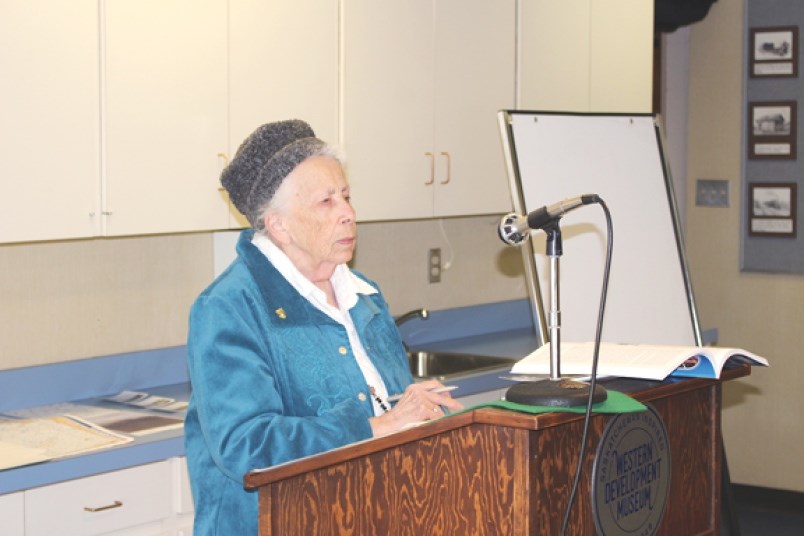The British Commonwealth Air Training Plane bases spotted across the Canadian Prairies are an important part of the aviation history of this country and Canada’s contribution to the war effort.
The story of the bases is so big that when City of Yorkton historian Terri Lefebvre Prince spoke at Heritage Day at the Yorkton branch of the Western Development Museum, she chose to focus on emergency landings of airplanes.
For Prince, the topic was one which resonated personally. Growing up in Dollard, SK., in the provinces southwest, she recalled a Dec. 8 day in 1943 when an Avro Anson plane, called a ‘Flying Greenhouse” because of all its windows, was forced to land in a field next to the tiny village.
“This was a huge surprise for the village,” she told about 20 people in attendance at the presentation Sunday.
Prince, a young girl at the time, said news, even about the war, was limited in a small Saskatchewan village, so the landing of a warplane trainer created an immediate buzz.
That buzz grew as a second plane flew in to help get the first back in the air. They could not fix the first plane and it became a matter of debate among residents who would feed the pilots and offer a bed for the unscheduled night stay.
The next day, a third plane arrived, all three sitting in the field until the first plane was fixed.
“It kind of brought the war a bit closer to our little village,” she said, adding the situation was still a happy one because the airplane landed safely. “It was sensational for the village, but it brought home the reality of war.”
But not all pilots training at the air schools landed safely when facing mechanical issues in the air.
Prince said a number of would-be pilots died during training at the Yorkton BCATP facility, which brought a thousand people to the city when built early in the war, and would train some 2000 pilots in its time of operation.
Prince said she is currently researching the pilots lost with a goal of including their gravesite in the City of Yorkton Walking Tour of the cemetery.
One such lost pilot was LAC Arthur Campbell whose Cornell trainer went down in the Waldron area.
The legacy of the training plane saw a number of the facilities evolve into airports, including Yorkton.
Others, like the one at Gimili, MB., became a racetrack. But on July 23, 1983 the old BCATP airstrip would become the saving grace of dozens of people, related Prince.
An Air Canada flight from Montreal to Edmonton unexpectedly ran out of fuel. The pilot, with experience flying gliders, managed to land the distressed airplane on the Gimili airstrip with no loss of life.
“This is an outstanding event … no one was killed in this landing,” she said.




